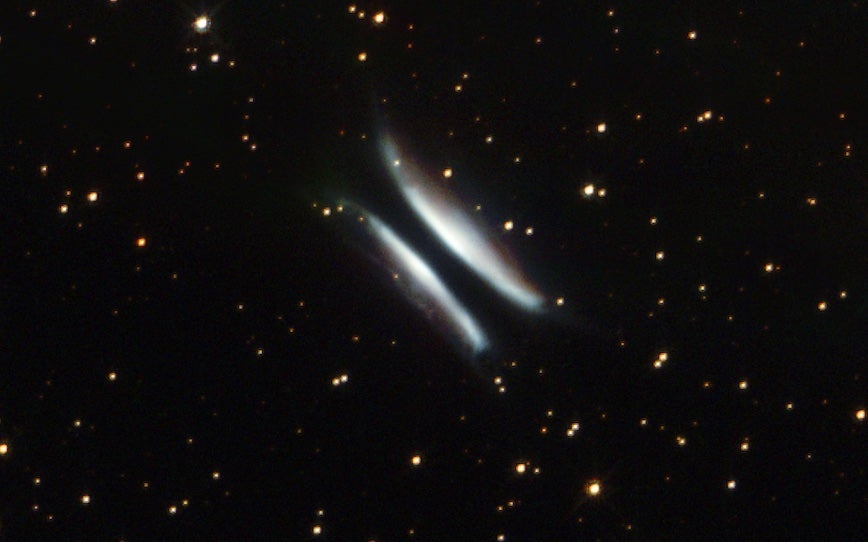
Gomez’s Hamburger (IRAS 18059–3211) is another of those deep-sky objects with a strange name. Arturo Gomez, an astronomer at Chile’s Cerro Tololo Inter-American Observatory, discovered it in 1985. As celestial burgers go, this one is plain — no cheese or condiments, just a light-colored bun with dark meat in between.
The nature of this magnitude 14.4 object has been the subject of some debate. Astronomers initially thought it was an edge-on planetary nebula. More accurately, it was thought to be the earliest stage in the formation of a planetary nebula, called a protoplanetary nebula (not to be confused with a planet-forming protoplanetary disk). Such objects are rare because this stage only lasts about 1,000 years. After that, the white dwarf blazes through the dust cloud. Based on that initial classification, IRAS 18059–3211’s distance was placed at 6,500 light-years.
As astronomers found other objects with dark belts bifurcating their glow, more recent investigations have reinterpreted this dusty meal. Current evidence suggests Gomez’s Hamburger is indeed a protoplanetary disk surrounding a young star. This also moves the object’s distance significantly closer to us: a mere 800 to 900 light-years.
Astronomy is rife with objects that were mysterious to astronomers a generation or two ago but now are well understood. If you have a large telescope and excellent skies, look about ½° southwest of the globular cluster NGC 6558 in the heart of the Milky Way, just west of a line from Gamma (γ) to Epsilon (ε) Sagittarii (which form the spout of the Teapot). I’ll take fries with that!









